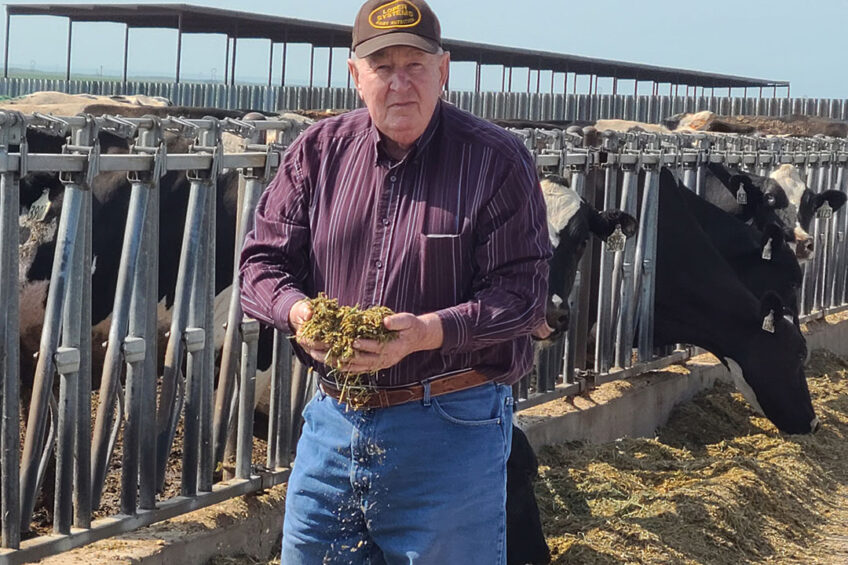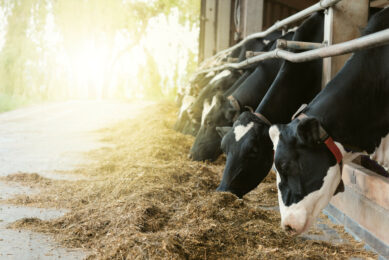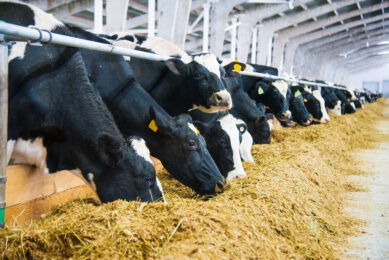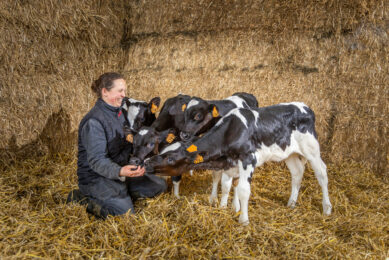United States: The wild and surprising history of TMR

A look behind the scenes at the creation of the TMR in its birthplace of California, and resistance to the concept by some parts of the dairy industry before its eventual adoption across the world.
The total mixed ration or TMR as it is commonly known, is considered by many to be the biggest development for the global dairy industry during the last 50 years. It is a complete diet that is mixed by dairy farmers on an ongoing basis, and originated in California, United States in the early 1970’s.
“An advantage of feeding TMR as opposed to feeding forages supplemented with concentrates is the opportunity to make every bite of feed essentially a complete, nutritionally balanced diet for all cows,” notes Dr David J. Schingoethe in his paper A 100-Year Review: Total mixed ration feeding of dairy cows, published in 2017. Schingoethe is an ‘Emeritus Professor’ in the Dairy and Food Science Department at South Dakota State University.

According to Schingoethe, the first full article on TMR in the Journal of Dairy Science appeared in 1966. Up to that time, dairy cows had been fed only forages. However, Schingoethe explains that factors such as increased milk production, larger herds and the popularity of milking parlours led to feeding a mixed nutritional concentrate in the milking parlour. There were issues with this feeding system, however, such as mess, labour and not enough time for cows to eat all their concentrate. Also, feeding forages and concentrates separately often also led to problems like digestive upset and milk fat depression. Using TMR avoided these issues and because of its many advantages (including consistent, strong cow performance), today most dairy herds around the world are fed TMR.
Illinois State University Professor Emeritus of Animal Science Dr Michael Hutjens points to a recent Hoard’s Dairyman Market Survey which shows that across the US from 2012 to 2019, TMR use rose from 62% to 91%. In his view, two main factors drove adoption of TMR. “One is larger herd size,” he says. “You need a large number of cows to make mixing on-farm economical. And the availability of nutritionists have made the process possible.”
However, Dr Dennis Daugherty, founder of Pine Creek Nutrition in California, points to another factor that was central to the beginning of the TMR story. “Beef feed lots,” he says, “were humming.”
At the feed yards, they were using mixer boxes, front-end loaders and had a barn for storage of commodities,” he says. “I realized the dairy producers had loaders and barns, they just needed the mixer boxes.
Feedlot origin
Dr Dan Loper says he came up with the idea of TMR in the early 1970s. He had finished his PhD and was working for a feed company in southern California, when he observed beef feed lots, where mixer trucks were being used to produce a well-blended ration. He realized the same thing could be done on larger dairy farms in the state – and beyond.
“At the feed yards, they were using mixer boxes, front-end loaders and had a barn for storage of commodities,” he says. “I realized the dairy producers had loaders and barns, they just needed the mixer boxes.” Loper decided to quit his job and become the first person to start a dairy nutrition business in the US, Loper Systems. In 1974, he held a one-day seminar in Chino, California for dairy farmers to learn how to do TMR on their farms. The 3 US companies that made mixer boxes at the time sent representatives, and they also brought their models to the parking lot so the dairy farmers could see them in action.
But the feed companies sent representatives too. The owners had realized quickly that TMR mixing on dairy farms – with direct delivery of commodities from brokers to farms – would cut their business drastically. “They sat there in the front row with tape recorders to intimidate me,” says Loper. “But not long after, I held another seminar in northern California. Then it grew and grew, and eventually, I hired other PhDs, six in total. We went state by state east to New Mexico to Texas, north to Colorado, to all the states west of Kansas. Each one of his PhDs managed about 25 dairies, and eventually, one by one, broke away and started their own successful dairy nutrition consulting firms.

Daugherty was one of these PhDs. He started at Loper Systems in 1980 and stayed for about six years. Dr Calvin Willis, owner of CMW Nutrition in Southern California, was another, and he stayed for about a decade. They both confirm that that Loper took what he was seeing at the feeds yards and introduced the TMR concept to dairy farmers in the Chino valley, and then beyond.
…the feed mills threatened the commodity brokers with pulling out their business.
Willis says, “it was cheaper for dairy farmers to make their own grain mixes than to buy mixes from the feed companies.” Loper believes that at the time, it was a savings for dairy farmers of $ 10 USD/imperial ton of feed.
The war begins
However, Loper explains that the feed companies, who had been supplying concentrates and various types of commodities and mixes to dairy farms up to that point, did not just concede defeat. In order to prevent truckloads of whole cottonseed, hominy, cotton seed meal, beet pulp, rolled barley, rolled corn, wet malt and citrus pulp being delivered directly to dairy farms where farmers would make their own TMR, the feed mills threatened the commodity brokers with pulling out their business. The feed mills also, according to Loper, made him a target.
“It was a war,” he says. “They came to my office and threatened my life. One Monday morning, I came to work and the windows were shot out. I carried a gun for the first seven years I was in business.”
These California feed companies, reports Loper, were also telling the dairy farmers to drop him, that he was not going to be around much longer because they ‘were going to break him.’ “I did have some dairy farmers pull away, but I was young and energetic and didn’t give up,” Loper says. “And actually, the more the feed companies got upset, the more the dairy farmers knew there was something big going on, that they should pay attention to.”
Meanwhile, Loper took his own actions. He got the main dairy magazine in the US at the time, The Dairyman, to let him write a column in every issue, and in exchange, he got a half-page ad. He took out other advertising as well. He was not making much money at the time, but he also decided to get a fancy car with a personalised licence plate so that he would appear to already be a success, thereby attracting more business. He says by the late 1970’s, closures of major feed companies in southern California had started. It continued for the next few years, and in all, about eight firms shut their doors. “It became a trend,” says Loper, “and you cannot stop a trend.”

Feed mill adaptation
Hutjens notes that some feed mills across the country adapted. “I think some industry consolidation happened in some states,” he says. “But overall, feed mills have been nimble and they started providing a package of minerals, additives, vitamins, and protein supplements (such as a six-pound package) and farmers found it convenient to buy those products premixed and easy to add to the TMR.”
Other farmers, he says, still “need grain processing, steam flaking or dry grinding, for their TMR mix, and feed mills can provide that as well. And the feed mills also expanded to add nutritionist services such as ration balancing, ‘walking the herd’ and forage testing.”
Hutjens notes that there can also be quality control issues when farmers directly buy truckloads of commodities. And it’s not always easy for farmers to “immediately pay for several months of feed, and storage of by-product feeds such as blood meal is not always possible or economical on the farm,” he explains. “So, feed mills still have their role.” Daugherty agrees that other feed companies “realized there was still profit to be made in delivering bulk purchases to farms, even if they were not doing as much TMR mixing themselves.”
Looking back, Loper thinks of those early days of TMR as “exciting.” He says his favorite thing about spreading the word was just saving his dairy farmers money and his aim was to provide valuable services that would remain valuable for decades and not just years.
Join 13,000+ subscribers
Subscribe to our newsletter to stay updated about all the need-to-know content in the dairy sector, two times a week.










